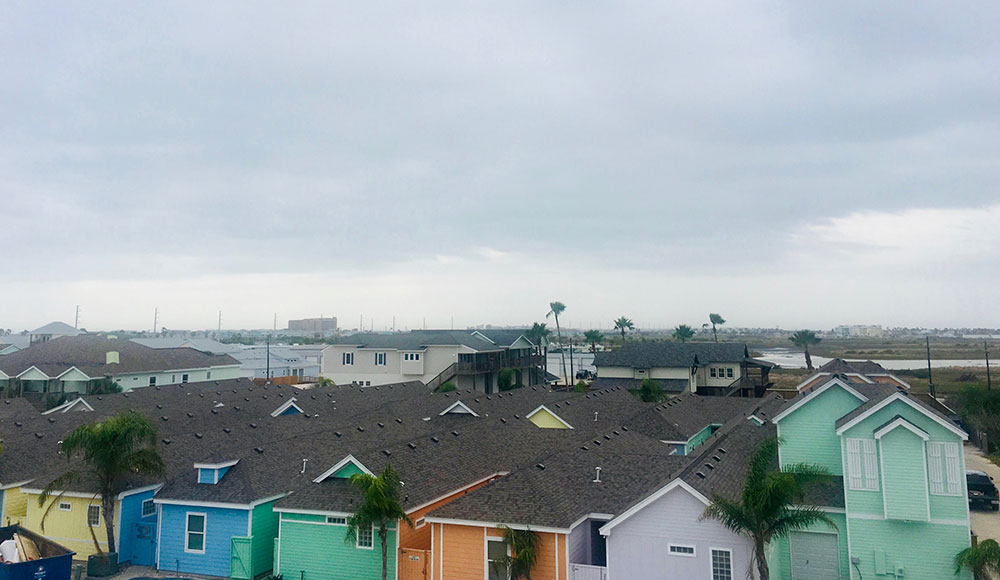Your roof is your home’s first line of defense against the elements, protecting you and your family from rain, snow, wind, heat, and more. However, extreme weather can take a toll on your roof over time, leading to damage that, if left unchecked, can affect the integrity of your entire home. Understanding how different weather conditions affect your roof and taking steps to maintain it can help you avoid costly repairs and extend the life of your roofing system. In this blog, we’ll explore how various weather conditions impact your roof and offer tips for maintaining it in extreme climates.
1. How Heat Affects Your Roof
High temperatures and sun exposure can cause significant wear and tear on your roof over time, especially in regions with intense heat like the southwestern U.S. Constant exposure to the sun’s ultraviolet (UV) rays can degrade roofing materials, leading to:
– Shingle Deterioration: Asphalt shingles can dry out and become brittle under prolonged sun exposure, making them more likely to crack or curl.
– Fading Colors:The color of your roofing material can fade due to UV exposure, reducing your home’s curb appeal.
– Thermal Expansion: Heat causes roofing materials to expand and contract, potentially leading to cracks or warping, especially in metal roofs.
Maintenance Tips for Hot Climates:
– Choose Heat-Resistant Materials:** If you live in a hot climate, consider using roofing materials like metal, clay tiles, or light-colored shingles designed to reflect heat.
– Install Proper Ventilation:** A well-ventilated attic helps regulate temperatures and reduces heat buildup in your roof, which can prevent damage to the shingles and roofing materials.
– Regular Inspections:** Inspect your roof at least twice a year for signs of sun damage, such as cracked or curling shingles, and replace any damaged areas immediately.
2. How Cold Temperatures and Snow Impact Your Roof
In colder climates, winter weather poses a different set of challenges for your roof. Heavy snowfall, freezing temperatures, and ice can lead to:
– Ice Dams: Ice dams form when snow melts on the roof, flows to the colder edges, and refreezes, creating a barrier that prevents proper water drainage. This can cause water to back up under the shingles, leading to leaks and interior damage.
– Freeze-Thaw Cycles: As temperatures fluctuate, water can seep into small cracks in your roof and freeze, expanding and causing further damage to shingles and flashing.
– Excessive Weight: Accumulated snow on the roof adds extra weight, which can put stress on the roof structure and lead to sagging or even collapse in extreme cases.
Maintenance Tips for Cold Climates:
– Ensure Proper Insulation: Proper attic insulation prevents heat from escaping your home, which reduces the likelihood of ice dams forming on the roof.
– Keep Gutters Clear: Clean gutters before winter to ensure proper drainage and prevent ice buildup along the roof’s edge.
– Install Heat Cables: In areas prone to ice dams, heat cables can be installed along the roofline to melt ice and keep water flowing freely.
– Remove Excess Snow: Use a roof rake to safely remove heavy snow buildup from your roof to prevent excessive weight and the formation of ice dams.
3. How Rain and Humidity Affect Your Roof
Rain is one of the most common causes of roof damage, particularly in regions with frequent downpours or high humidity. Prolonged exposure to moisture can lead to:
– Leaks and Water Damage: Constant rain can cause leaks, especially if your roof has damaged shingles, flashing, or clogged gutters.
– Mold and Mildew Growth: Moisture trapped in your roof or attic can lead to the growth of mold and mildew, which can compromise your roof’s structure and lead to health problems for your household.
– Wood Rot: Wooden structures, including fascia boards and rafters, are vulnerable to rot if they are consistently exposed to water.
Maintenance Tips for Wet Climates:
– Check for Leaks: Regularly inspect your roof for signs of water damage, such as water stains on the ceiling or damp insulation in the attic. Fix any leaks immediately to prevent further damage.
– Ensure Proper Drainage: Clean your gutters and downspouts regularly to ensure rainwater is being properly directed away from your home’s roof and foundation.
– Use Waterproof Materials: Consider using waterproof underlayment beneath your shingles to provide an extra layer of protection against moisture.
4. How Wind and Storms Affect Your Roof
Strong winds and storms can cause significant damage to your roof, particularly if your roofing materials are old or already compromised. High winds can:
– Lift or Tear Off Shingles: Strong winds can lift and remove shingles, leaving your roof vulnerable to water damage.
– Damage Flashing: Flashing around chimneys, vents, and other roof penetrations can be loosened or damaged by high winds, leading to leaks.
– Cause Debris Damage: Flying debris, such as tree branches, can strike your roof during a storm, causing punctures or dents.
Maintenance Tips for Windy Climates:
– Secure Loose Shingles: Regularly inspect your roof for loose or damaged shingles and replace them immediately to prevent wind from lifting them during storms.
– Trim Overhanging Trees: Cut back any tree branches that hang over your roof to reduce the risk of debris damage during high winds.
– Reinforce Flashing: Ensure that all flashing is properly sealed and secured, especially around vulnerable areas like chimneys and skylights.
– Consider Impact-Resistant Shingles: In areas prone to high winds or storms, consider installing impact-resistant shingles that can withstand the force of debris and gusts.
5. How Hail Impacts Your Roof
Hailstorms can be particularly damaging to roofs, especially in regions that experience frequent or large hail. Hailstones can:
– Dent or Crack Shingles: Hailstones can cause dents or cracks in shingles, weakening the roof’s protective layer and making it more susceptible to leaks.
– Damage Flashing and Gutters: Hail can also damage metal flashing and gutters, leading to water drainage issues and potential leaks.
Maintenance Tips for Hail-Prone Areas:
– Inspect After Storms: Always inspect your roof for damage after a hailstorm, looking for dents, cracks, or missing shingles. If you notice damage, have it repaired as soon as possible.
– Install Hail-Resistant Roofing Materials: Certain materials, such as impact-resistant shingles or metal roofs, are more durable and can better withstand hail.
– Document Damage for Insurance: If your roof is damaged by hail, document the damage with photos and contact your insurance provider to file a claim for repairs.
6. Maintaining Your Roof in Extreme Climates
Regardless of the type of extreme weather your area experiences, regular maintenance is the key to extending the life of your roof and preventing damage. Here are some general tips for maintaining your roof in extreme climates:
– Schedule Regular Inspections: Have a professional roofer inspect your roof at least once a year and after major weather events. They can identify potential issues early and make necessary repairs.
– Address Minor Issues Promptly: Even small problems like loose shingles or minor leaks can lead to bigger, more costly damage if left untreated. Address these issues as soon as you spot them.
– Use the Right Materials: Invest in high-quality, weather-resistant roofing materials that are suitable for your local climate. For example, metal or clay tiles are great for hot climates, while impact-resistant shingles work well in storm-prone areas.
– Keep Gutters and Downspouts Clear: A well-functioning gutter system helps prevent water buildup on your roof, reducing the risk of leaks and water damage.
– Invest in Preventive Solutions: Consider installing heat cables in cold climates, waterproof underlayment in wet areas, or impact-resistant materials in hail-prone regions to minimize damage from extreme weather.
Your roof is constantly exposed to the elements, and extreme weather can take a toll on its performance and lifespan. Whether you live in a hot, cold, wet, or windy climate, understanding how weather affects your roof and taking proactive steps to maintain it can help prevent costly damage. Regular inspections, prompt repairs, and investing in the right materials for your region will keep your roof in top shape and ensure that it continues to protect your home for years to come.
Contact Us
Texas Coastal Roofing and Construction can help you maintain your roof’s excellent condition. We offer a variety of services. Call us today at (361) 332-1263to learn more. We serve the Corpus Christi coastal bay area including Portland, Rockport, Port Aransas, McAllen, North Padre Island, Kingsville, Mathis and more!


Recent Comments